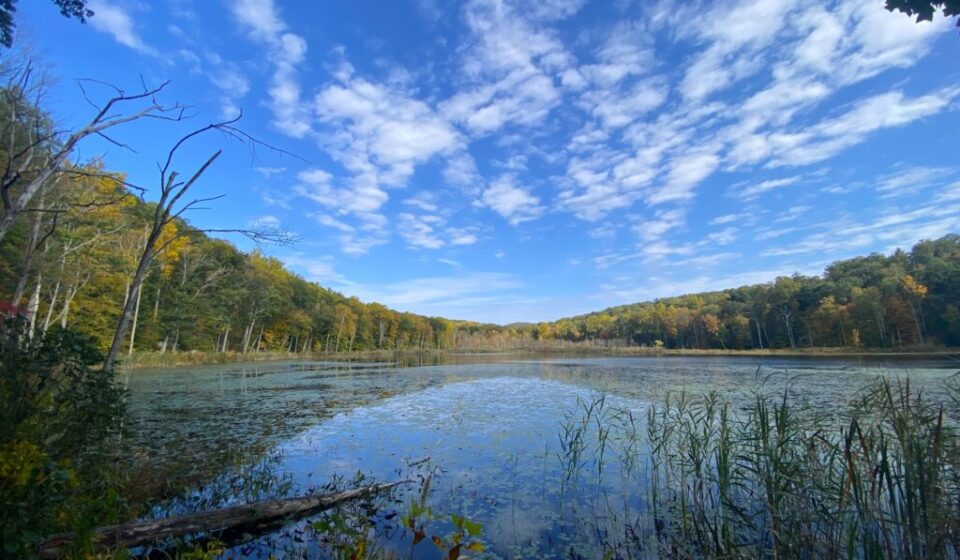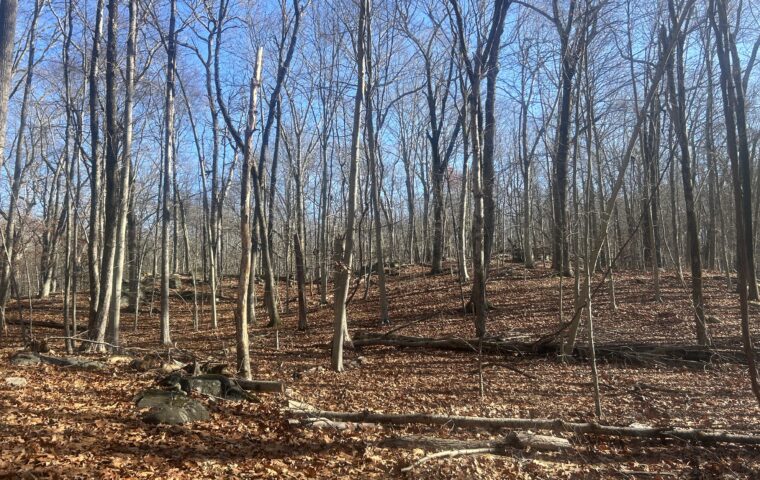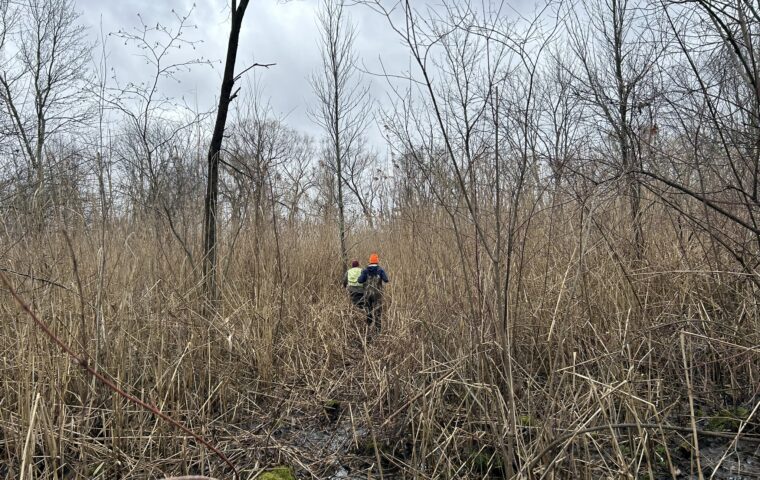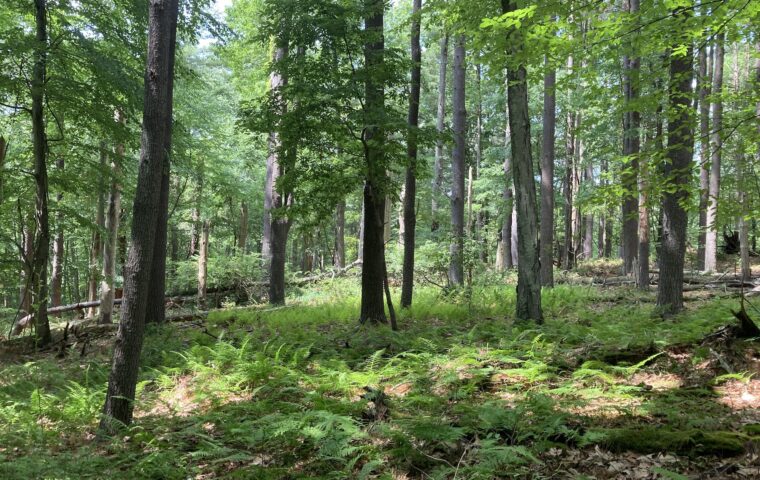
Release Date: October 25, 2022
Patterson, NY—Westchester Land Trust (WLT) announced the permanent protection of a 174-acre property in Patterson that contains Browns Mountain, a rare floating bog, and several species of distinctive plants. The land is located within a regionally significant forest and expands on an existing corridor of protected open space.
“Protecting this property expands and connects a vast network of conserved land while preventing forest fragmentation and ensuring the highly visible ridgeline of Browns Mountain is preserved forever,” said Kara Whelan, president of Westchester Land Trust. “It is very rewarding to see this land, which contributes to climate mitigation in the region, protected forever. The property’s wetlands help absorb excess rainfall from increasingly strong storms and its wide variety of habitats offer refuge for species facing dual threats of development and changing weather patterns.”
Located 52 miles north of New York City, the land buffers the 6,000-acre Great Swamp, one of the largest freshwater wetlands in the state. The Great Swamp is designated by the USDA Forest Service as a Highlands Conservation Focal Area and cited by the New York State Department of Environmental Conservation (NYSDEC) in a 2009 report for its unique habitat, diverse wildlife, and scenic value. The Great Swamp functions as an aquifer recharge area and important headwaters for New York City’s water supply as part of the East Branch of the Croton Watershed, a priority drinking water supply protected by the New York City Department of Environmental Protection.
“The ecological value of this land cannot be overstated,” said Gentian Falstrom, land project manager at WLT. “Protecting this land within the surrounding conservation corridor ensures that wildlife and plants have access to the critical and unfragmented habitat they need to migrate and adapt to changing climate patterns.”
Additionally, the property has been identified as an area of “highest conservation value” on the Hudson to Housatonic (H2H) Regional Conservation Partnership’s Strategic Conservation Map that considers climate resilience, ecological integrity, proximity to protected land, and drinking water quality, and other factors as priorities for permanent protection. During an H2H landowner gathering in 2016 that was hosted at Great Hollow Nature Preserve, Westchester Land Trust and its conservation partners engaged with the owners of this land and began to explore options for its permanent protection.
“I am grateful that the Westchester Land Trust will oversee the future of this glacial pond, its floating bog, and the surrounding forest and wildlife,” the previous landowner said.
Among its distinctive natural features, the land contains the 991-foot Browns Mountain and Little Pond, a 16-acre glacial spring-fed kettle pond, as well as a unique floating bog that contains rare and potentially endangered species. Together, the kettle pond and floating bog are part of an approximately 30-acre NYSDEC regulated wetland.
The property is situated within a conservation corridor that includes NYSDEC’s 1,085-acre Cranberry Mountain Wildlife Management Area and two WLT conservation easements totaling more than 350 acres. The land previously housed the Yonkers YMCA Boys Camp from 1939–1952, followed by a hunting retreat lodge from 1965–1970, and was most recently used as a private residence with rental accommodations.
The property is currently not open to the public. A public access plan, including trail linkage opportunities, is being assessed with the ultimate goal of allowing the community to appreciate the unique ecological features of the land, while protecting these rare natural resources.
Westchester Land Trust received support for the closing costs of the project through a grant from The Nature Conservancy’s Resilient and Connected Network Grant Program and a gift from the Friends of the Great Swamp (FrOGS). Putnam County Land Trust provided assistance during the early phase of the project.
“The Resilient and Connected Network Grant Program aims to increase the pace and scale of partner-led protection of the lands and waters that are the most resilient to climate change—and can support the most diverse range of plants and animals into the future,” said Stu Gruskin, chief conservation and external affairs officer at The Nature Conservancy. “The Nature Conservancy is proud to support this project that both increases a conservation corridor and protects unique ecosystems.”






